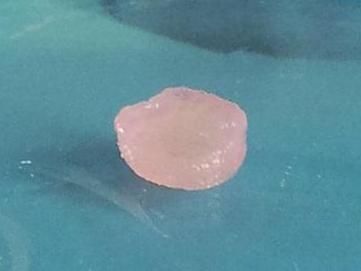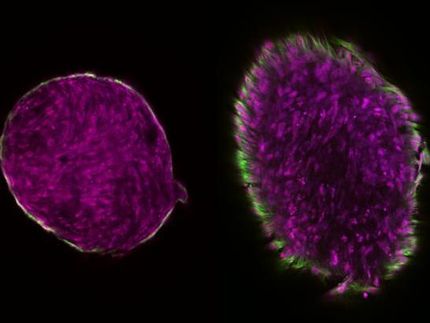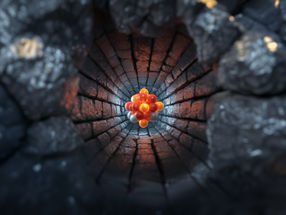Cells from cow knee joints used to grow new cartilage tissue in laboratory
In an effort to develop a method for cartilage tissue engineering, researchers at Umeå University in Sweden successfully used cartilage cells from cow knee joints. By creating a successful method with conditions conducive to growing healthy cartilage tissue, the findings could help lead to a new treatment cure for osteoarthritis using stem cell-based tissue engineering.

Engineered cartilage tissue at Umeå University
Janne Ylärinne
Articular cartilage is tissue that is found on all the joint surfaces in the body. Since the tissue is not supplied with any blood vessels, it has a low self-repair capacity. Joint injuries and wear often damage cartilage tissue, leading to a condition called osteoarthritis. In serious cases, osteoarthritis can mean the loss of practically the entire cartilage tissue in the joint. While the condition causes pain and immobility for the individual, it also burdens society with accumulated medical costs.
"There is currently no good cure for osteoarthritis," says Janne Ylärinne, doctoral student at the Department of Integrative Medical Biology and author of the doctoral dissertation. "Surgical treatments may help when the damage to the cartilage is relatively minor, whereas joint replacement surgery is the only available solution for people with larger cartilage damage. However, artificial joints only last for a couple of decades, making the surgery unsuitable for young persons. So we need a more permanent solution."
Tissue engineering provides a possible solution to osteoarthritis. In their experiments, the researchers at Umeå University made findings that provide useful information for efforts to develop new methods to produce cartilage-like "neotissues" in a laboratory environment. In the engineering process, the cells, the signaling molecules and the scaffold, i.e. artificial support material, are combined to regenerate tissue at the damaged site in the joint. The process is difficult and much of what constitutes suitable growth factors and a mechanical loading environment is still unknown. Today, there is a huge variety of available synthetic and natural scaffolds. It is also unclear whether stem cells or primary cells are best suited.
Using primary bovine chondrocytes, i.e. cartilage cells from cows, the researchers improved methods to grow cartilage tissue in a laboratory environment, producing tissue similar to tissue normally present in the human joints. In future, these results may help the development of neocartilage production for actual cartilage repair. For this, stem cells could be grown to provide unlimited amount of material for tissue engineering. However, more research is needed to improve the tissue quality and make it more structurally similar to the hyaline cartilage found in the human body.
Most read news
Organizations
Other news from the department science

Get the life science industry in your inbox
By submitting this form you agree that LUMITOS AG will send you the newsletter(s) selected above by email. Your data will not be passed on to third parties. Your data will be stored and processed in accordance with our data protection regulations. LUMITOS may contact you by email for the purpose of advertising or market and opinion surveys. You can revoke your consent at any time without giving reasons to LUMITOS AG, Ernst-Augustin-Str. 2, 12489 Berlin, Germany or by e-mail at revoke@lumitos.com with effect for the future. In addition, each email contains a link to unsubscribe from the corresponding newsletter.




















































